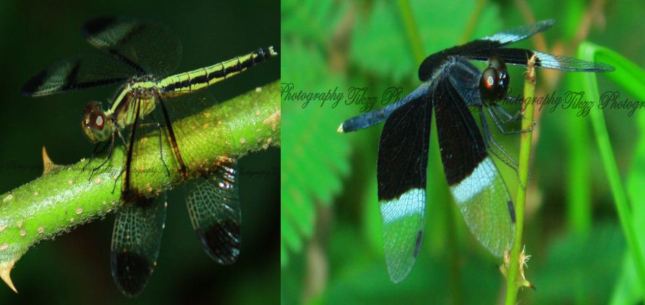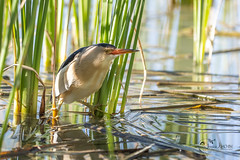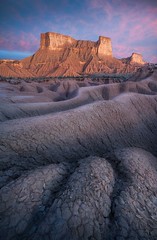
There are over 2,500 species of stick insect in the World. They have a worldwide distribution, but most species are found in the tropics. The stick insect can sometimes reach over 13 inches (33 cm) long.Be They rely on a hard outer body for rigidity. To allow for rapid growth, they shed their outer skin several times. After shedding a skin, they will hang from a twig to harden their new outer layer. During this period they are weaker – try not to disturb them.These creatures breathe through a series of holes called spiracles which are located along the side of the body.
Stick insects are very good at hiding. At night they can become slightly darker to make them harder to spot . This is their way of trying to look like a stick swinging in the breeze.Also, the swaying movements may help the insects see objects against the background. Rocking movements by these sedentary (sitting) insects may replace flying or running as way to define objects in the visual field.
Stick Insect Eggs are round and brown with a yellow nodule. They look like tiny seeds. One female can lay several hundred eggs during an average life of around a year.
Inconveniently for anyone keeping stick insects as pets, stick insect droppings or waste can easily be mistaken for eggs and vice versa.
Tags: adaptations, Athropodas, Insect mating, Insect pet, Insects, Mating, pet, Sri Lanka stick insect, stick Insect, stick insect mating, Stick insect pets, tropical insects

The Green Forest Lizard has a bright green dorsal coloration, usually with 5 or 6 white, cream or dark green transverse stripes; these are changeable.Often the stripes continue on to the tail. The head is yellowish- or brownish-green whereas the male develops a bright red head and throat in the breeding season. The underside is a pale green, the tail is light brown.
The length of head is one and a half times the size of its breadth, the snout is a little longer than the orbit. The lizard has a concave forehead, swollen cheeks and smooth, unequal upper head-scales.
The body is compressed, the dorsal scales are large and usually feebly keeled, but sometimes smooth. these scales point backwards and upwards and are as large as or a slightly smaller than the ventrals, which are strongly keeled and mucronate. 30 to 35 scales cover the middle of the body. The gular pouch is not developed, the gular scales are feebly keeled, they are nearly as large as the ventrals. A short oblique fold is in front of the shoulder and is covered with small granular scales. The Nuchal and dorsal crests are continuous, composed of closely set lanceolate spines with smaller ones at the base.The hind-limb reaches to the front of the eye or further. Calotes calotes has a very long and slender tail.
Though very little knowledge is available in roosting ecology of the green forest lizards.
Tags: adaptation, Calotes calotes, color changes, display, forest lizard, Green Forest Lizard, green lizard, Lizards, long tail, Reptiles, roosting, sender tail, sri Lanka lizards

Locally common damselfly of the low country wet zone Sri Lanka. Found in weedy areas around paddy fields, streams and ponds.
very colourfull body and eyes.
Tags: Ceriagrion cerinorubellum, colourful damselfly, Damselflies, Damselflies sri Lanka, dragonflies sri Lanka, Insects, Odonata, Painted waxtail, paints, wet zone dragonflies, zygoptera

In males of spine tufted skimmer, the hindwing is 31 to 34 mm in length and the total body length ranges from 41 to 48 mm. The male has a red face and dark grey eyes. The thorax is dark brown and the abdomen is red. The female is reddish brown. This species is easily confused with Orthetrum testaceum and can be differentiated by the colour of the thorax and eyes of the males and females. Other separating characters include the tuft of setae below the second abdominal segment inOrthetrum chrysis male, lacking in O. testaceum.
spine tufted skimmers are Widespread in tropical Asia including Sr Lanka.Common in ponds and along streams with trees nearby.
Tags: Damselflies, Dragonflies, Insects, Odonata, Orthetrum chrysis, Red dragonflies, rthetrum testaceum, Spine tufted Skimmer, Sri Lanka dragonflies, tropical Asia
 Males, head widened, with a yellow strip at the top. Thorax black with yellow stripes on the side. Abdomen black with yellow stripes on the bottom side, white tip. Legs flattened, yellow. Hind wing 17 mm, abdomen 32.5 mm. Female, dark dull overall. Sides of thorax yellow strip. Juvenile, head with white stripes. Side of thorax white strip. Abdomen white. White legs.
Males, head widened, with a yellow strip at the top. Thorax black with yellow stripes on the side. Abdomen black with yellow stripes on the bottom side, white tip. Legs flattened, yellow. Hind wing 17 mm, abdomen 32.5 mm. Female, dark dull overall. Sides of thorax yellow strip. Juvenile, head with white stripes. Side of thorax white strip. Abdomen white. White legs.
Very common insect found in reeds and marshy vegetation of forest streams and ponds from lowlands to mid-hills.yellow featherleg can be seen in South Asia, Sri Lanka, China, Southeast Asia, Indonesia .

Tags: China, Copera marginipes, damselfly, Dragonflies, Indo China, Indonesia, Insects, Odonata, South Asia, Southeast Asia, Sri Lanka damselfly, Yellow featherleg, zygoptera

Blue Sprite Damselflies are one of the most common damselflies found near running water or still water. They usually rest on the plants either in the middle of ponds or at the water edges.The male damselfly is brightly blue in colour with black pattern on abdomen. Notice its blue head, its face and eyes are blue too.
The male Blue Sprite Damselfly has its blue thorax with black marks. Its long and slender abdomen is black in colour with blue rings.
The female are look the same except pale blue to grayish-green in colour. When Blue Sprite Damselflies are at rest, they held their wings closely folded up vertically over their thorax.
- Damselflies lay their eggs in the plants under the surface of water. Female damselflies have their blade-like ovipositor for making an opening in the plant for her eggs. Female lays eggs alone or sometime still in tandem with the male.
Tags: Blue sprite, damselfly, Insects, Odonata, Sri Lanka damselfly, Sri Lanka dragonfly

The Pied parasol male and female are completely different in terms of appearance.The adult male’s wings have a broad black band followed by a white band. It’s body colour varies with age with juveniles initially having a light brown body.The females have dark brown tips with brown spots in the middle of their golden wings. Their abdomens are light brown and yellow with black lines running along the length of it. Both sexes are 1.8 cm long.
This species is generally found around tanks, ponds, marshes, slow flowing streams and paddy fields. They can be found from the lowlands to the mid hills throughout the year. Pied parasol can be found throughout South and south-East Asia.
Tags: Damselflies, Dragonflies, Insecta, Insects, Neurothemis tullia, Neurothemis tullia tullia, Neurothemis tullia tullia female, Neurothemis tullia tullia male, Neurothemis tullia tullia male and female, Odonata, Pied Parasol, Pied Parasol female, Pied Parasol male, Pied Parasol male and female, south asia dragonflies, south east asia dragonflies, Sri Lanka dragonflies, zygoptera
 Nephila pilipes is a species of golden orb-web spider. It can be found in Japan, China, Vietnam, Taiwan, Singapore, Myanmar, Indonesia, Thailand, Laos, Philippines, Sri Lanka, India, Papua New Guinea, and Northern Australia. The bodies of the males are only 5-6mm long but the females are giants, with bodies up to 50mm long and leg-spans reaching 20cm or more.It is one of the biggest spiders in the world.
Nephila pilipes is a species of golden orb-web spider. It can be found in Japan, China, Vietnam, Taiwan, Singapore, Myanmar, Indonesia, Thailand, Laos, Philippines, Sri Lanka, India, Papua New Guinea, and Northern Australia. The bodies of the males are only 5-6mm long but the females are giants, with bodies up to 50mm long and leg-spans reaching 20cm or more.It is one of the biggest spiders in the world.
The females build large webs, in open areas often high in forests. The web is a vertical with a fine irregular mesh and not symmetrical, with the hub is usually nearer the top and oval made up of a golden spiral bridged by colourless radiating threads; the oval is suspended by colourless threads from the surrounding vegetation (or structures) which may be meters away.
These spiders eat flies, beetles, butterflies and other flying insects that become ensnared in their webs. Leftovers of meals, such as the exoskeletons (skins) of insects are left hanging in the web.
Rather than egg sacks being hung in the web, a pit is dug which is then covered with plant debris or soil.The female digs a pit in the ground into which she deposits the fluffy yellow egg sac and covers it with soil and leaves. After hatching, the spiderlings quickly make their way up trees and other structures.
The first, second and fourth pairs of legs of juvenile females have dense hairy brushes, but as the spider matures these brushes disappear.

Tags: and Northern Australia, Aracnida, Arthropodas, biggest spider, China, Chinese spiders, gaint spider, golden orb-web spider, India, Indonesia, Insects, Japan, Laos, Large spiders, Myanmar, Nephila pilipes, Papua New Guinea, Philippines, Singapore, spiders, Sri Lanka, sri Lanka spiders, Taiwan, Thailand, Vietnam, wood spider, world large spider
 Atlas moths are the largest species of moth in the world. The females have bigger, heavier bodies than males and larger wingspans too, ranging from 25 to 30 cm (10 to 12 inches), with a surface area of at least 400 cm² (62 sq in). Despite their huge size, the moths do not eat anything once they hatch from their cocoons. Both males and females lack fully-formed mouth parts; they rely on the sustenance they build up as caterpillars, for stored energy. They only live as hatched moths for two to three weeks.
Atlas moths are the largest species of moth in the world. The females have bigger, heavier bodies than males and larger wingspans too, ranging from 25 to 30 cm (10 to 12 inches), with a surface area of at least 400 cm² (62 sq in). Despite their huge size, the moths do not eat anything once they hatch from their cocoons. Both males and females lack fully-formed mouth parts; they rely on the sustenance they build up as caterpillars, for stored energy. They only live as hatched moths for two to three weeks.
The natural habitat of the atlas moth, is Southeast Asia including Sri Lanka, particularly around the Malay archipelago. They do not fly far from where they hatch, since they are very inelegant fliers and do not have enough energy stored for long journeys. They live purely to breed, so the fact that they do not venture far from their hatching area, allows for easy mating to occur.
The atlas moth caterpillar has to eat a huge amount of food, to store enough fat for life as an adult moth. They eat citrus, willow leaves, and evergreen tree leaves. In India, the silk from the caterpillars is not farmed commercially, but the characteristic brown silk is used in a small-scale capacity. It is known as fagara, and is more durable than regular silkworm moth silk. The cocoons are sometimes used as purses or handbags in Taiwan.
The caterpillars hatch from small eggs that are laid on the underside of leaves. They hatch within two weeks and feed until they are about 115 mm (4.5 in), before pupating. The caterpillar has spines that are soft and fleshy, which protrude upwards from its back. Atlas Moths are coated with a white, waxy layer.
Tags: Asian Moths, Atlas Moth, Indian moths, Insects, Large athropodas, Large Insects, no mouth parts moths, south asia moths, Sri Lanka Moths, world Largest moth

The Blue Mormon (Papilio polymnestor) is a large swallowtail butterfly found in South India and Sri Lanka.The butterfly is most common in heavy rainfall areas, such as evergreen forests. Also common in deciduous forests and wooded urban areas, primarily due to the cultivation of its host plants, i.e. the Citrus species.
Habitats are Frequents forest paths and streams. The male is fond of sun and avoids the shade. It frequents flowers especially of Mussaenda frondosa, Ixora coccinea, Jasminum spp. and Asystasia gangetica. Periodically raids thicker forest patches, especially where Atalantia spp. are to be found in search of females to mate with. Has a rapid unidirectional flight and frequently changes course, hopping up and down in its flight path. Difficult to catch. Known to bask in the sun. Attracted to damp patch and has greater tolerance to other butterflies and humans while lapping up the mineral rich moisture. Known to visit animal droppings.
Males have the upper wings rich velvety black. The fore wing has a postdiscal band composed of internervular broad blue streaks gradually shortened and obsolescent anteriorly, not extended beyond interspace 6.
The hindwing has the terminal three-fourths beyond a line crossing the apical third of the cell pale blue, or greyish blue, with superposed postdiscal, subterminal and terminal series of black spots—the postdiscal spots elongate, inwardly conical; the subterminal oval, placed in the interspaces, the terminal irregular, placed along the apices of the veins and anteriorly coalescing more or less with the subterminal spots.
The underside is black with and on the base of the cell in the fore wing is an elongate spot of dark red; the postdiscal transverse series of streaks as on the upperside but grey tinged with ochraceous and extended right up to the costa; in some specimens similar but narrow streaks also in the cell. Hind wing with five irregular small patches of red at base, the outer three-fourths of the wing grey touched with ochraceous, but generally narrower than the blue on the upperside; the inner margin of the grey area crosses the wing beyond the cell; the post-discal and subterminal black spots as on the upperside. In some specimens this grey area is greatly restricted, its inner margin crossing the wing well beyond the apex of the cell; the subterminal spots merged completely with the terminal spots and form a comparatively broad terminal black band. Antennae, head, thorax and abdomen blackish brown.
Female very similar but the inter-nervular streaks on the fore wing paler, extended into the cell both on the upper and undersides. Hind wing: the pale blue area on the upperside and the corresponding grey area on the underside paler. In some specimens of the Blue Mormon there is a diffuse short crimson streak at the base of the cell of the fore wing on the upperside.
Tags: Blue Mormon, Butterfly, butterfly wings, Endemic Sri Lanka India, India Butterflies, Insects, Lepidoptera, Papilio polymnestor, Sri Lanka Butterflies, swallowtail butterfly
















